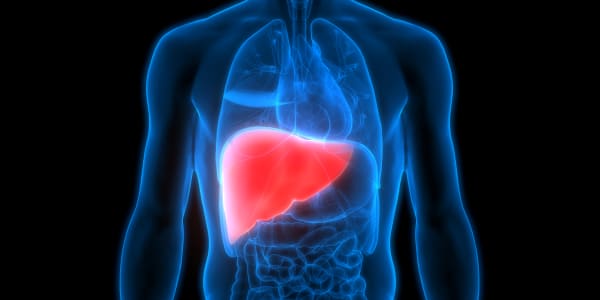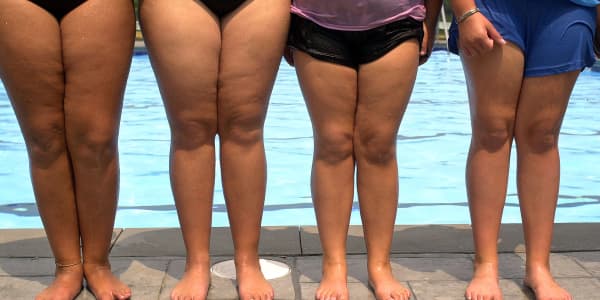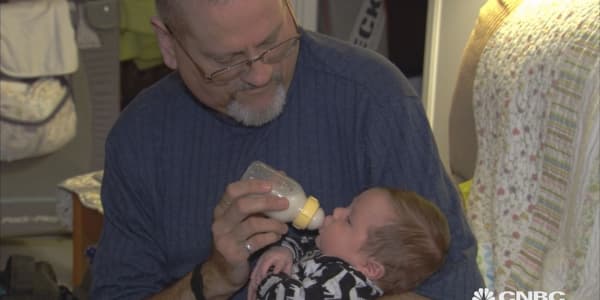New treatments like immunotherapy and probiotics can send microbe-sized fighters deep inside the body to fight illness and inflammation that has been linked to disease, but there's a problem — they are being sent into places we can't see.
"Sophisticated cellular agents are fulfilling a sci-fi vision of having shrunken micro-robots running around in bodies and fixing things, but currently there is no way to see where these agents are inside the body, what they are doing or how they are doing it. It's a black box," said Mikhail Shapiro, assistant professor of chemical engineering at the California Institute of Technology.
Shapiro is part of a research team that published what peers are describing as an "innovative" solution to this blindness problem in the most recent edition of Nature. The Caltech team has genetically engineered two common bacteria, E. Coli and Salmonella, to include a nano-compartment of gas that functions similar to sonar on a submarine. Sound waves can be bounced off the genetically engineered bacteria and sent back using common ultrasound technology.
In late August 2017, the Food and Drug Administration approved the first-ever treatment that genetically alters a patient's own cells to fight cancer.
A major motivation for the Caltech team's experiments was the emerging field of cellular therapy. "There are lots of examples of therapies, not just a drug or protein, but a cell being genetically reprogrammed to go back into the body and find a tumor and kill the tumor," Shapiro said.
He added there is also a boom in probiotic medical treatment research — not just the current yogurt on the market many already eat — but venture-backed companies working on genetically engineered bacteria that can be sent into the gut to detect inflammation or a tumor.
"Ultrasound is ubiquitous for most of us; the first picture of us was ultrasound inside our mom," Shapiro said. "And if we can connect ultrasound with the ability to visualize cells and what's happening in cells, we would be able to visualize these cellular agents people are developing for therapeutic and diagnostic purposes." He added, " Ultimately this works in patients because ultrasound is so simple."
Sophisticated cellular agents are fulfilling a sci-fi vision of having shrunken micro-robots running around in bodies and fixing things, but currently there is no way to see where these agents are inside the body, what they are doing or how they are doing it. It's a black box.Mikhail Shapiroassistant professor of chemical engineering at the California Institute of Technology
To date, the most effective medical imaging tools have relied on fluorescent proteins — a technique based on jellyfish genes that resulted in a Nobel Prize in 2008 — but that does not work well for cells in the middle of the body because light gets absorbed on its way out of tissues.
While there is no guarantee this technique will ever be applied to human patients — the Caltech experiments were conducted with mice — it already can prove valuable in lab testing of drugs. A former official at biotech firm, Vion Pharmaceuticals, that experienced a failed trial in the first-ever attempt to use Salmonella as a cancer-fighting agent decades ago, said this week it might have continued with more trials if this technique had been available because the ultrasound would have allowed it to better track the bacteria to see if they were successfully colonizing patient tumors — Vion had to use tissue biopsies.
The immunotherapy market is projected to be worth as much as hundreds of billions of dollars in the next few decades, and both venture capital and stock market investors have been investing in biotech firms developing these therapies. The study of the role that inflammation plays in disease has also become a key goal of medical science. And research related to the microbiome — the millions of types of microorganisms including bacteria that live in and on our bodies, especially in the gut — has also been booming.
"Some patients respond and some patients don't, and the question is did cells not get to the right place, or not in enough numbers, or got there but the therapy was not effective," Shapiro explained. "Depending on the answer to those questions, what you do next could be very different." He added that in drug development and patient treatment, "ideally you answer these questions sooner rather than later, you don't wait for the cancer to progress."
Researchers not directly involved in the Caltech study wrote in an accompanying piece for Nature this week that outlined the implications of the acoustically engineered bacteria, "Some medical approaches currently in use or being developed introduce bacterial cells as a therapy for gut disease or cancer, so this ultrasound technique might be adapted for clinical use to determine whether such cells have reached the desired location."
More from Modern Medicine:
Drug breakthroughs coming in neglected hearing loss market
An AI has been designed to walk people through the end of life
Nobel Prize-winning research warns about using phone in bed
As in the case of the jellyfish gene, Caltech researchers went looking in the natural world for an organism with the right properties to bounce off soundwaves. They found one in a photosynthetic microbe in bodies of water that evolved a gas-filled vesicle inside their cells that could modulate density. As a result, these gas-filled proteins could produce signals under ultrasound. In ultrasound, sound waves move through tissue and when encountering something with another density or stiffness, some of sound waves gets reflected back, Shapiro said, equating it to sonar in the ocean. The Caltech researchers engineered the gene for that gas-filled nanostructure into benign versions of E. coli and Salmonella.
Now the Caltech team has moved on to a larger goal with this gene — engineering it into the T-cells that are vital to immunotherapy. "The first step was to put it into bacteria to see if we can image those bacteria, and image in the body, but the bigger picture goal is to do it in any kind of cell. We want to put the same genetic set into immunotherapy to track it."
He said that is very active research in the Caltech lab now, and "it's doable. With improvements in this technique and if it is well tolerated by cells, ultimately we would like to see it in humans."
But Shapiro said it will be years before Caltech researchers know if the approach works with T-cells similarly to in bacteria, but the ultimate goals of this technique span from basic science to targeted therapies.
"We want to see things like cells and cellular functions happening inside the body. We want to know how cancers form and how microbes live, because in the body is different than in the lab," Shapiro said. "Even just to answer basic questions on what microbes do in mammals, there are still lots of open questions on diseases that this technique can help answer."





